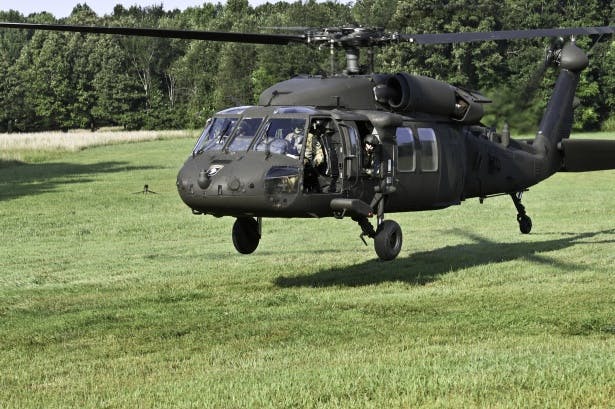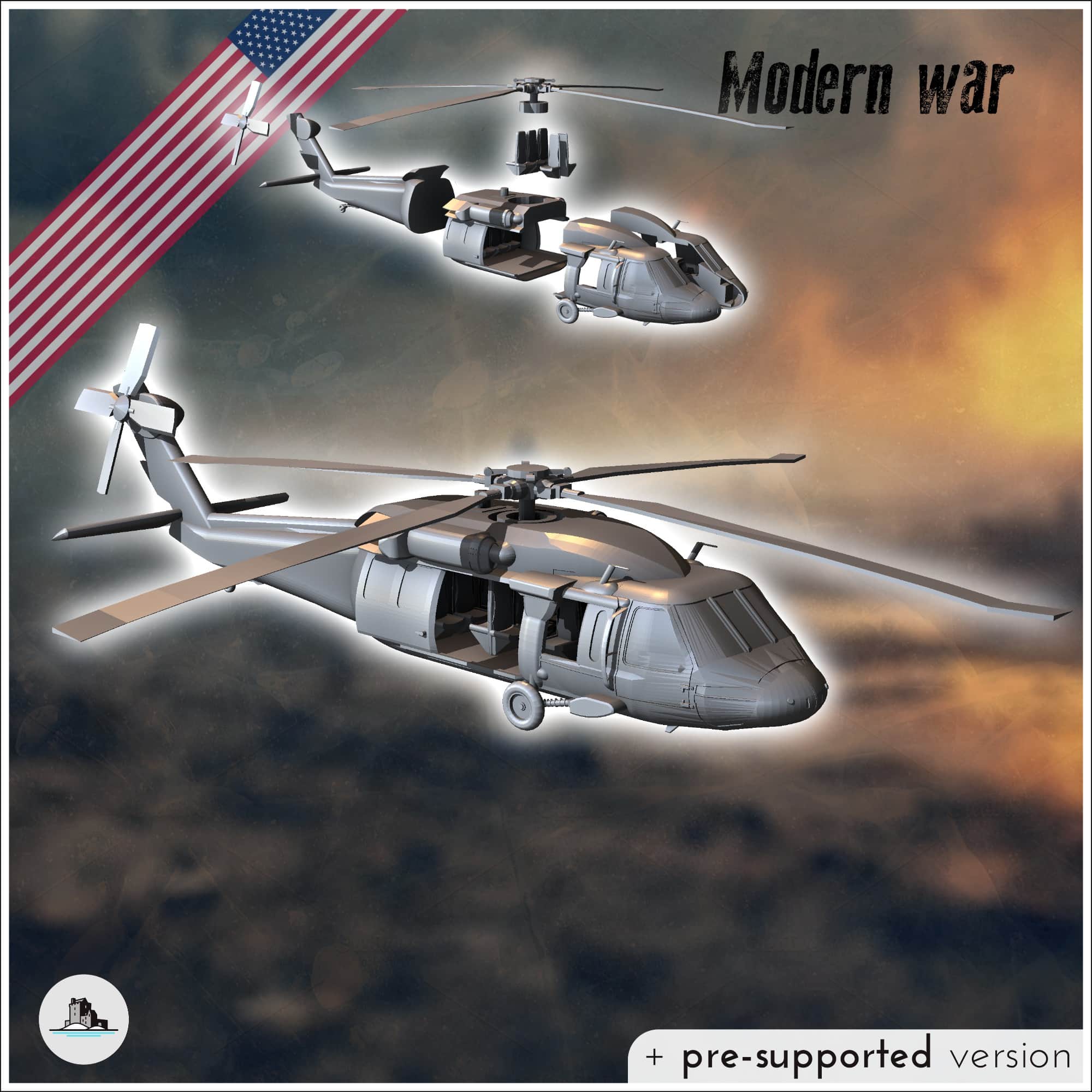UH 60: A Comprehensive Guide to Its Features and Military Applications
UH 60: A Comprehensive Guide to Its Features and Military Applications
Blog Article
Everything You Required to Know Concerning the UH 60 Helicopter
The UH-60 helicopter, a cornerstone of U.S. Army aeronautics considering that its launching in 1979, represents a remarkable mix of design and functional versatility. Understood for its remarkable speed and range, the UH-60 has actually been adjusted for various goals, from troop transportation to clinical discharge. As army requirements evolve, so as well does the helicopter, with recurring advancements aimed at enhancing its capacities and incorporating modern innovations. To fully value the value of the UH-60 in contemporary armed forces procedures, one must consider its history, layout, and the future technologies that can redefine its role.
Background of the UH-60
Established in the late 1970s, the UH-60 Black Hawk helicopter became a reaction to the U.S. Military's need for a flexible utility helicopter that can do a variety of objectives under difficult problems. The impetus for its design was the drawbacks recognized in the earlier helicopters made use of throughout the Vietnam Battle, specifically in terms of survivability, ability to move, and speed.
The Black Hawk was made by Sikorsky Airplane, including advanced modern technologies and products to boost its performance and resilience. It was officially introduced into service in 1979, rapidly ending up being a critical property for armed forces operations - uh 60. Its ability to transport soldiers, clinical emptying, and logistical support in both combat and altruistic missions made the Black Hawk an indispensable element of the united state Army's aviation fleet
Throughout the years, the UH-60 has been constantly upgraded, adjusting to the changing nature of warfare and the advancing requirements of modern armed forces procedures. Its operational background includes participation in significant conflicts, peacekeeping objectives, and calamity alleviation initiatives, solidifying its reputation as a reliable and efficient helicopter in different settings worldwide.

Style and Specs
The style of the UH-60 Black Hawk helicopter regularly shows a dedication to operational efficiency and adaptability. Established by Sikorsky Aircraft, this medium-lift energy helicopter features a sleek, wind resistant body that improves speed and maneuverability. Its tandem blades system, characterized by 2 counter-rotating blades, decreases vibration and raises lift ability, enabling safer procedures in varied environments.
The UH-60 is powered by 2 T700-GE-701C turboshaft engines, offering a maximum speed of around 180 knots and a variety of around 400 nautical miles. Its durable airframe is constructed from advanced composite products, ensuring durability while preserving a relatively low weight. The helicopter has an optimum gross weight of regarding 22,000 pounds, sustaining a flexible payload configuration.

Functions and Objectives
A versatile system, the UH-60 Black Hawk helicopter serves a plethora of roles and goals within army operations. Made primarily for army transport, it can lugging as much as 11 soldiers, making it a crucial possession for quick deployment and logistical assistance.
Along with army transportation, the UH-60 stands out in clinical emptying (MEDEVAC) goals, furnished with innovative clinical devices to supply vital care during transportation. Its ability to operate in varied environments improves its performance in fight search and rescue (CSAR) operations, where quick removal of personnel is essential.
The helicopter also plays a significant function in reconnaissance and monitoring objectives, using onboard sensing units and tools to gather knowledge. Furthermore, its adaptability reaches logistical assistance, efficient in transporting supplies and devices to forward running bases - uh 60.
In fight operations, the Recommended Site UH-60 can be furnished with various weapon systems, enabling it to offer close air support. Its multi-role ability makes the Black Hawk an essential device for contemporary military forces, adjusting flawlessly to the advancing demands of battleground circumstances and making sure mission success across a range of operational contexts.
Efficiency and Capabilities
Recognized for its durable efficiency, the UH-60 Black Hawk helicopter boasts remarkable abilities that improve its functional performance throughout various missions. uh 60. This multi-role aircraft is geared up with effective twin-engine Turbomeca Arriel 1D1 engines, giving extraordinary rate and ability to move, with an optimum cruise ship rate of roughly 150 knots and a functional series of around 400 nautical miles
The Black Hawk's innovative avionics and fly-by-wire control systems dramatically enhance flight security and handling, enabling it to operate in varied settings, including negative climate condition. Its flexibility is more exhibited by its capability to lug approximately 11 completely outfitted soldiers or a haul of approximately 8,000 extra get more pounds, making it excellent for troop transport, medical evacuation, and logistical support missions.
In Addition, the UH-60 is designed for survivability, featuring strengthened airframes, ballistic defense for team and passengers, and advanced countermeasure systems to avert threats. The helicopter's agility and rate, integrated with its ability for fast release, make it a crucial asset in contemporary military operations, guaranteeing that it continues to be a key element of tactical air support and field of battle flexibility.
Future Advancement

One considerable emphasis is the combination of innovative avionics systems, which will improve situational recognition through enhanced navigating and interaction capacities. This includes the prospective use of synthetic knowledge to assist pilots in decision-making and mission planning.
Moreover, future versions might include advanced materials and style attributes to strengthen the helicopter's durability and minimize its radar signature, boosting survivability in opposed atmospheres.
The intro of hybrid-electric propulsion systems is also on the perspective, intending to enhance fuel performance and minimize logistical worries. Such improvements might extend functional array and reduce the helicopter's environmental footprint.

Verdict
The UH-60 helicopter stands for a substantial innovation in armed forces air travel since its intro in 1979. Its robust design, versatile capacities, and constant upgrades ensure its importance in numerous operational roles, consisting of troop transportation and clinical discharge. As innovation progresses, future growths will likely improve its performance via the combination of expert system and hybrid-electric systems. The UH-60's withstanding presence highlights its crucial duty in modern military operations and highlights the continuous development of military aeronautics innovation.
The UH-60 helicopter, a foundation of United state Army aeronautics since its debut in 1979, stands for a remarkable blend of design and functional flexibility. As armed forces requirements evolve, so too does the helicopter, with recurring improvements aimed at boosting its capacities and incorporating modern technologies.The style of the UH-60 Black Hawk helicopter continually mirrors a dedication to operational performance and flexibility. Established by Sikorsky Airplane, this medium-lift energy helicopter includes a smooth, wind resistant fuselage that improves speed and maneuverability.The UH-60 helicopter stands for a considerable development in armed forces air travel given that its intro in 1979.
Report this page